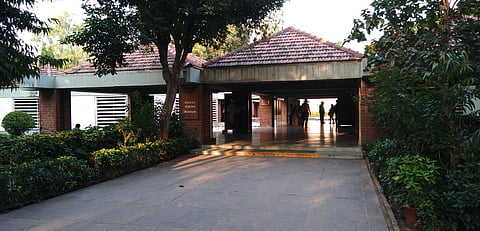
- Destinations
- Experiences
- Stay
- What's new
- Celebrating People
- Responsible Tourism
- CampaignsCampaigns
- SubscribeSubscribe
- Buy Now

Up in the sky as kites go up on August 15, we are reminded of the day our country got her freedom, and a struggle that it was. Independence Day celebrations should not be limited to flying kites, singing National Anthem and flying the National Flag. For a change, let travel ignite that sense of patriotism in you. Here are four historically significant places in India (and why) you can explore this Independence Day 2025.
The erstwhile summer capital of British India has got a lot of story to tell. Located on the Observatory Hills of Shimla, the Viceregal Lodge (also known as Rashtrapati Niwas) holds a very important piece of our country, the struggle for independence and the rise of modern India. Viceregal Lodge was first occupied by the then Viceroy of India Lord Dufferin in 1888. Many historically important meetings were held here, one of which was the Shimla Conference in favour of Indian self-government and a united Indian. The proposal was rejected by the Muslim leaders which took us to the next meeting where the 1947 partition was discussed. The Viceregal Lodge was an important stepping stone in the creation of India and Pakistan. Post independence, in 1964, the then President of India Prof S. Radhakrishnan handed the Viceregal Lodge over to the Indian Institute of Advanced Study.
Note: In one of the inner rooms at the Viceregal Lodge, there is one round wooden table broken in two pieces, a symbol for Indo-Pak partition.
Back in the day, Manipur had two central issues: presence of the Allied forces in Imphal and Japanese enemy forces trying to invade India. It was 1944, the time of Second World War, when war against Japan had reached Indian soil too, especially in Manipur and Nagaland. During this time, Moirang was the headquarters of Azad Hind Fauj or the Indian National Army and it was here that for the first time the flag of the INA was hoisted on Indian soil. In an attempt to overthrow the British, Azad Hind Fauj, led by Netaji Subhash Chandra Bose, decided to side with the Japanese. Though the Japanese forces experienced their largest defeat till date, the historical fight put Imphal on the map of India's struggle for Independence.
An impressive gallery at the INA Museum in Moirang showcases precious and rare photos, documents and letters of Subhash Chandra Bose, now a national treasure that you must explore this Independence Day.
Who knew salt would be one of the most important aspects of India's fight for freedom? Mahatma Gandhi knew. What started as a non-violent protest march opposing laws that prohibited independent production and distribution of salt by Indians became one of the first and most important Civil Disobedience Movement. The 385 km march from Sabarmati (Ahmedabad) to Dandi, led by Mahatma Gandhi gathered a lot of Indian supporters. Upon reaching the sea beach, Mahatma Gandhi and his followers picked handfuls of salt as a gesture of producing salt and breaking the law. This peaceful protest went without any arrests initially but later on more Indians started to break the law which led to the arrest of thousands including Mahatma Gandhi and Jawaharlal Nehru. The protest also paved the way for Gandhi-Irwin Pact in 1931 where Mahatma Gandhi finally represented Indian National Congress at the second session of the Round Table Conference in London.
Dandi is a story of how every little things or place played a big part in the Indian Independence movement.
The recorded history of Calcutta, present-day Kolkata, dates back to the arrival of English East India Company in 1690–and you can still find grand reminders at every turn. Calcutta gradually became the headquarters of the Company and saw the formation of historically crucial areas like Chowringhee, Dalhousie Square and North Calcutta. Change started appearing in Calcutta in the form of the first national conference of the Indian National Association (INA), a national organization. INA later would go on to become one of the crucial organisations that mobilised Indians far and wide in the fight against the British rule. The British no longer found Calcutta their home post 1905 partition of Bengal. Head here on Independence Day 2024 to witness the country's valiant journey so far.
